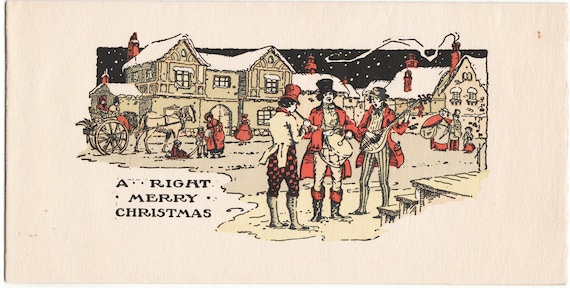I read something recently in the book
Christmas Memories by Susan Waggoner that astonished me about Christmas in the 1950's.
To all of us who were born after the huge surge of babies, known as the Baby Boom, that mainly occurred from 1946-1960, I think it's hard to really grasp how huge it all was. So let me tell you, it was a lot - a lot of babies, a lot of new houses in the suburbs, a lot of money due to the low unemployment and the low rise of inflation and a lot of buying.
There were a record amount of new families that were now settling into larger houses in the suburbs. These houses needed to be filled and they had the money to do it.
When Christmas came families didn't just get one tree for the main room, they now got extra trees for throughout the house. And gifts were no longer just one per person, people began giving multiple gifts, especially to the children. The children of the 1950's had everything on their Christmas list and then some (which explains why many of them later rebelled against their upbringing and claimed to not care about material things). In the 1950's there was no reason not to give and receive all you wanted. The average family was much better off than they had been before or during the WWII and Americans just wanted to have fun now that the war was over and the U.S. had won.
I knew all this before I read Waggoner's book, but I don't think I really grasped how much disposable income there was back then until I read that in 1951 Macy's ran a full page ad in the New York newspaper asking people not to buy so much. Can you imagine a store doing this?
People were buying huge amounts of stuff and coming back and buying more. The popular department store was unnerved by how much people were buying. They were questioning their motives. They were genuinely concerned that people were still in wartime shortages mode. They ran an ad that said in part the following:
This excerpt from the ad came from the Christmas Memories book. I wish I could find a copy of the actual ad, but it doesn't appear that one is online.
Again, I ask, can you imagine any store doing this or saying it? It is an amazing piece of history that seems to have been forgotten. I think the words that Macy's said in this ad are very wise and kind. The amounts people were buying most have been so bizarre to them to do this.
When I lived in the Bay Area and worked at a specialty clothing store, a woman who looked like she couldn't afford much came in. She was a little strange, but pleasant. She began pulling aside clothes she wanted and at the end of it her bill was about three times bigger than any sale I had ever heard of at the store, much less sold. It was weird. I was trying to talk her out of things. It was just uncomfortably too much. I felt really weird about it. And of course I was concerned with how she was going to pay for it. She went to the bank and came back with the cash (It turned out she was from a well off family and she later admitted to me that she didn't like to bother with having her clothes washed).
Because of this experience I can kind of understand how Macy's felt and I now understand more clearly what a financial and material boom the Fifties were.
I've been researching the Fifties particularly because it's the family theme this Christmas. Every year we have a theme for Christmas. It's often a decade, but it can sometimes be a country. Some of the ones we've done are the 1930's, Medieval times, the 1960's,
the Old West and countries like Holland, Hungary and Switzerland. We base the meal, music and games around the theme and we dress up. I know it's kind of kooky, but it's very fun and we all enjoy a theme.




















